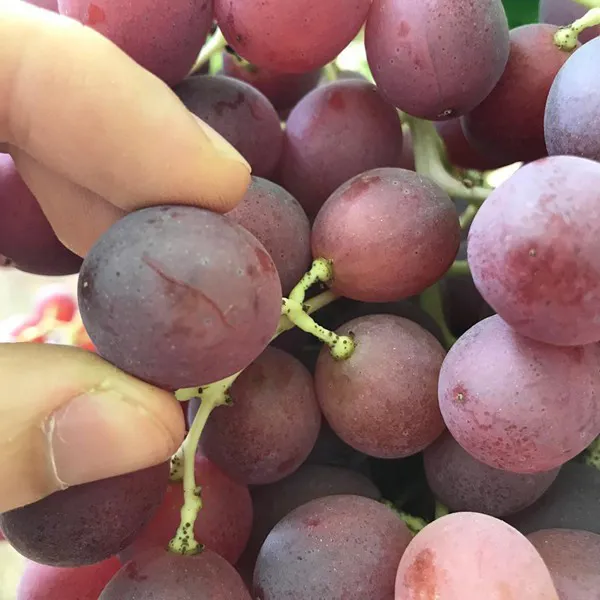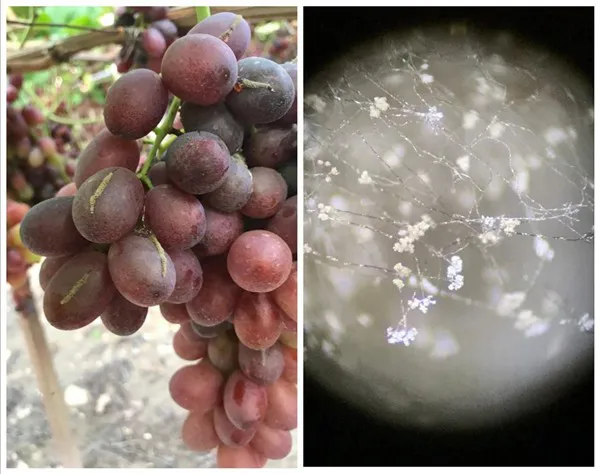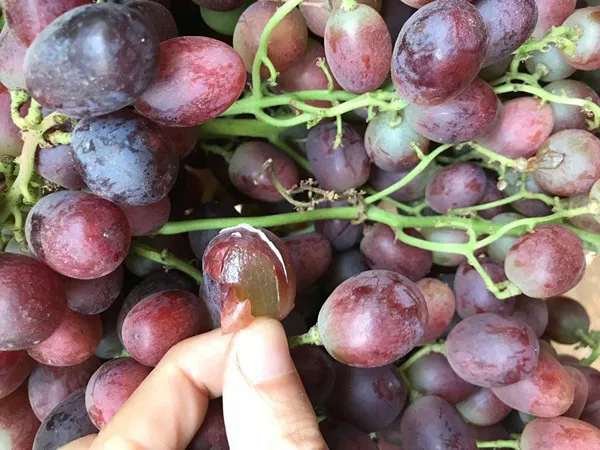In recent years, grapes are increasingly becoming a seasonal product. Planning cuts in time and storing the goods for a period suited to commercial needs are the challenges that the sector is now facing as a result of climate changes.
In the last few weeks, whole batches of grapes have been completely affected by rot, due to the high humidity, thus causing huge losses for many producers. In order to have a more precise picture of what happened, we asked a technical feedback to agronomist Domenico Abate, specialized in post-harvest operations. This specific agricultural year, the problem of mold has been made more challenging in fact, not only by the delay in ripening, which has postponed the cuts during the season, but also by the persistence of dry weather conditions until mid-to-late October, which have resulted, to date, in a greater presence of grapes in the field.
"We have become quite familiar, sad to say, with epidemics. However, unlike what happened with Covid-19, in agriculture epidemics are much more frequent than we can imagine, even if during the whole cultivation cycle, farmers and technicians work to avoid them. In the environments of southern Italy, white rot and gray mold are undoubtedly the diseases that can result, with greater frequency, in an epidemic manifestation. What is happening at this moment on table grapes is, to all intents and purposes, an epidemic, but we should not think about this event as an unusual and rare episode, but rather as something quite predictable."
 Early stages of infection caused by the pathogenic fungus
Early stages of infection caused by the pathogenic fungus
"For an epidemic to occur, three important and indispensable factors must coexist, namely a virulent parasite (Botrytis cinerea), favorable weather, and a susceptible host (grapes). Over the last few weeks, these three factors have been intertwined, generating grapes that are far ahead of their maturity stage, and therefore more susceptible; climatic conditions characterized by persistently high levels of relative humidity; and, finally, the presence of the pathogenic fungus. Market dynamics and the way the processing industry is able to respond to them also play to our disadvantage."
 In the photo on the left: Botrytis cinerea sporifications. On the right: Botrytis spores seen under a stereo microscope.
In the photo on the left: Botrytis cinerea sporifications. On the right: Botrytis spores seen under a stereo microscope.
"It must be kept in mind that Botrytis spores are always present in the air, and ready to infect when moisture levels above 80% are reached. Infections in the field, which cannot be stopped with phytosanitary treatments, proceed very quickly at temperatures between 10 and 25°C. Moreover, the necessity to supply the retail trade with a low residual product, exposes, in some cases, the grapes to higher risks of infection. Once the fungus has started to sporulate (recognizable by the presence of mold), infections proceed with an exponential pattern. During the cutting of the grapes, it is not always possible to respect the incubation period, therefore the infections start only when the grapes reach their destination. Very often, the bunches, apparently healthy, show the first symptoms of infection (symptoms called slip skin), even after 24-48 hours from the infection".
 Slip Skin Phenomenon
Slip Skin Phenomenon
"In this case, the only solution is sulfur dioxide, which, if used during the post-harvest period, helps to preserve grapes from infections, although it is not capable of completely eradicating them. Moreover, even transport and storage temperatures, often neglected by operators, play a fundamental role in the development, or not, of mould. In the next years, also as a consequence of the varietal renewal process we are witnessing, the adoption of post-harvest strategies and technologies better suited to the new scenarios will become a key factor to successfully manage the markets and fight economic losses."
For more information:
Agronomo Domenico Abate
Area Tecnica Graper Srl
+39 347 866 72 29
d.abate@graper.it
